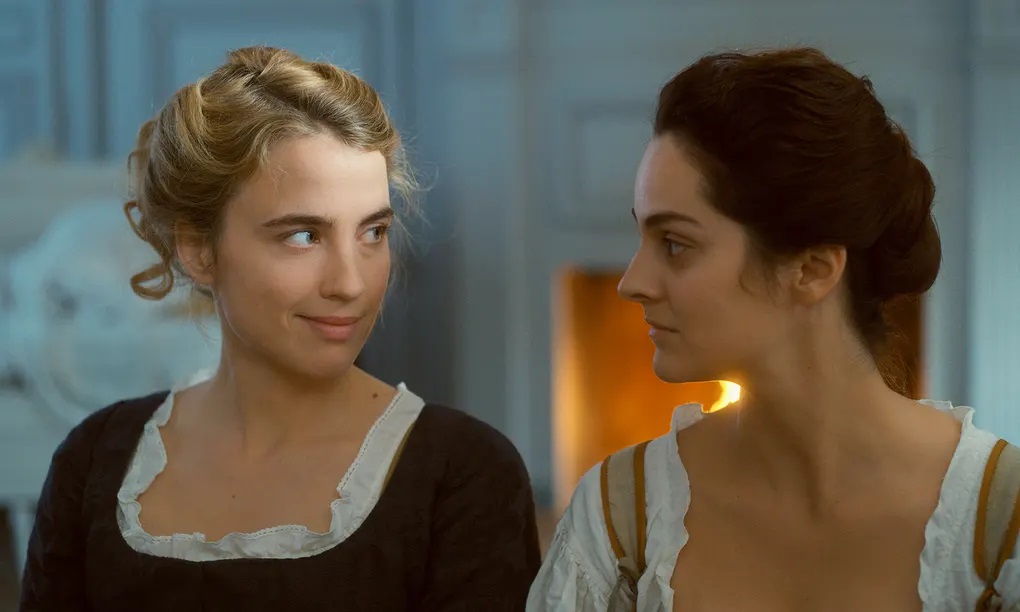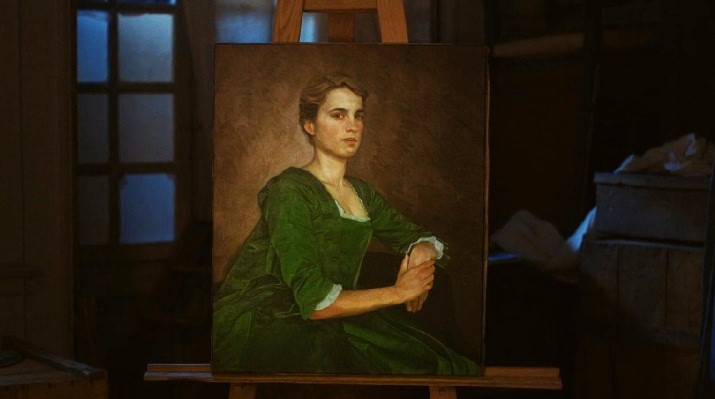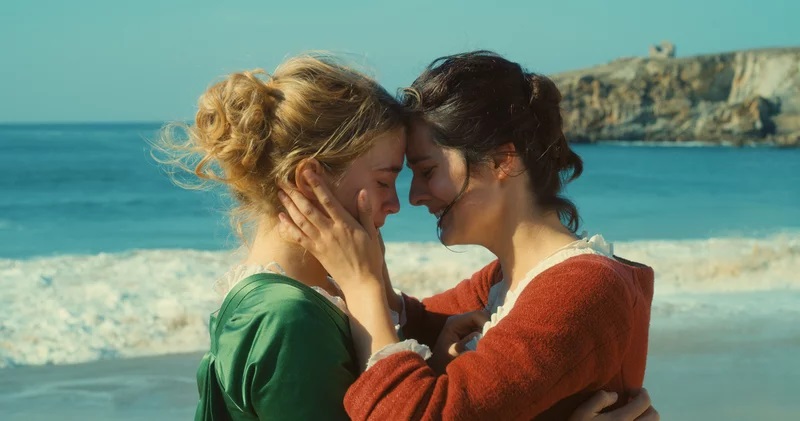A portrait always comes from two people’s interactions. One is sitting someplace, and the artist is portraying the subject who sits in front of it. A picture results from an artist closely observing a subject, depicting it in detail, and visually memorising it forever. The ‘subject’ and the artists are always close when portraying a subject. That closeness is secretly happening; no one may notice or realise the depth of their matter.
The movie, ‘Portrait a Lady on Fire (2019)’, is a French historical romantic drama directed by Celine Sciamma. It is set in 18th-century France; it tells the story of a lesbian sexual affair between an aristocrat and a painter tasked to paint her Portrait. The Portrait is the central point of these exchanges and relationships, and both kept a distance, and the painting erased that distance. This film competed at Cannes, won Queer Palm, and was celebrated as Celine’s masterpiece in Art.
Portrait of a Lady on Fire is a visual portrait of the relationship between two young aspirant women from 18th century France in both extremes of social settings and tells in an erotic way that explores the nature of Love and romance in lesbian relationships. This movie is the last movie of the celebrated director and the “Accidental Trilogy of Youth”. This movie examines women’s lives through a woman’s gaze and a painting without sexualising their bodies. Women’s body and lesbian relationship is not fresh in the film, but ‘Portrait of Lady on Fire’ is unique in this category because the narration does not display their body. Still, their pure Love and passion portray them.
Painter and the Subject

What is a subject for a painter? The subject is more than anything for a painter, and they focus on portraying it in minute detail. When the woman painter, Marianne, comes to paint, a young woman, Heloise, who married a Milanese nobleman, refused to marry before and was never and still allowed for a portrait. The real task is a woman painter is hired as a painter and acts as a companion of the ‘subject’; the subject isn’t ready to sit for the Portrait, so she escorts her on daily walks along the rugged coastline to memorise features and paint her in secret. The painter observes the subject closely when they are together on the seashore, which leads them to closer touch and a sensual ambience. Some elements are visible in this movie, such as the nature of the subject, who does not want to be married and had been living in a convent before the suicide of her older sister necessitated her return and her marriage.
Why she is unwilling to marry is not visible, but the movie follows the beautiful narration of two young women in a fantastic location, loneliness, and sensual interactions. A woman painter falls in Love with her subject while painting her beauty secretly; the tension and relationship between the subject and the painter are impressive. The movie never relies on the subject of the sensual relationship between the two; the painting process is narrated, and there is no male gaze from the beginning to the end.
This movie subtly narrates the class and other situations that led us into a multi-layered and complex time in Western history, as mentioned many times in the film. The subject, Heloise, feels trapped on the island and inside her identity itself, and when the artist comes to her as a companion, both try to navigate from one to one. The artist intends to finish the Portrait and look into the subject more and more closely in their everyday walkthrough to the coast; every day, she is in a different attire mood.
Secret Portrait and Love
 In this movie, Love is not secret at all. But the Painted world of Portrait is hidden and is depicted as a private activity while the subject calmly looks and walks into the abyss of the sea. The artist looks into the ‘subject’ eyes, fingers, and details of the face and learns from those to paint her. The subject always floats from presence to absence, changing the mood from visible to invisible. Artists use themselves and maid their ‘subject’ attire to paint and create a compositional balance between the subject matter.
In this movie, Love is not secret at all. But the Painted world of Portrait is hidden and is depicted as a private activity while the subject calmly looks and walks into the abyss of the sea. The artist looks into the ‘subject’ eyes, fingers, and details of the face and learns from those to paint her. The subject always floats from presence to absence, changing the mood from visible to invisible. Artists use themselves and maid their ‘subject’ attire to paint and create a compositional balance between the subject matter.
After a while of engagement with the artist, the lady decides to pursue a portrait, and then after, the ‘subject’ realises that the artist knows her better than anyone; each detail is precise and well noted. Those details do not end on the artist’s side; the ‘subject’ looks into the artist’s mannerisms and styles. They share the details of each other and let them know, as Heloise asks the artist, ‘Do all lovers feel they’re inventing something?
Portrait, a Lady on Fire, is metaphorical and melancholic, then creates the feeling of sensuality of two souls’ adornment, not a body. The body vanishes from the narration, and the movie balances silence and words, light and darkness, intimacy and distance. All emotions and sensuality come around the Portrait of a Lady with a profound dialogue, steaming stare and pent-up sentiments, letting you observe two people closely as they fall in Love.
The director explores their affinities through physically attracted souls and celebrates their contrasts but the anguish and inner rage they have long suppressed. ‘You can reproduce that image to infinity, says Heloise to the painter when they lay in the bed and draw a picture of the painter for her from the mirror’s reflection on Heloise’s hip.

Krispin Joseph PX, a poet and journalist, completed an MFA in art history and visual studies at the University of Hyderabad.





